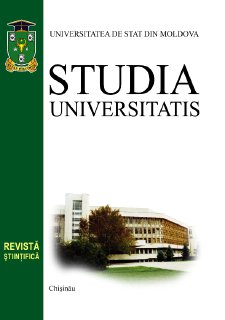AGROGENESIS: MANIFESTATIONS IN THE PHYSICAL STATE OF THE ARABLE CHERNOZEMS IN THE AREA BETWEEN PRUT AND DNIESTER
Gheorghe JIGĂU, Boris TURCHIN, Sergiu DOBROJAN, Galina DOBROJAN, Iurie MOŞOI, Angela STADNIC, Universitatea de Stat din Moldova Nistor BOLOCAN, Institutul de Microbiologie şi Biotehnologie, Universitatea Tehnică a Moldovei Viorel BOTNARU, Anatolie FALA Asociaţia Naţională de Dezvoltare Rurală (ACSA)
Abstract
Increasing the pressure of techno-anthropogenic factors on arable chernozems, in conditions of intensification of
the degree of continentality of the soil climate induced by climate change, against the background of unidirectional
reduction of the role of the biological factor in the anthropo-natural chernozem pedogenesis, involved a newphase
in its evolution in which the decisive role belongs to physical degradation. It is distinguished by significant changes
in typogenetic chernozeomic processes: a) formation and accumulation of humus; b) aggregation-structuring of the
soil mass.
Within the complex process of decomposition-transformation of fresh organic matter, the weight of the humus
formation and accumulation process is reduced and the weight of the mineralization process is increased.
Biocoagulation processes of aggregation-structuring of the soil mass is significantly reduced. Instead, it increases the share of thermocompression and physical-mechanical processes in the evolution of the aggregate system of
arable chernozems. This leads to the disruption of the functionality of the pedofunctional system [humic system] ↔
[aggregatesystem] manifested in the reduction of the meaning and intensity of the reproductive processes of chernozemous pedogenesis and the natural fertility of arable chernozems. In the current phase of chernoziomic pedogenesis,
anthropo-natural agrogenesis manifests itself in the attenuation of differences at the subtype taxonomic level.
Keywords: anthropo-natural, physical degradation, pedogenesis, humic system, aggregate system.


